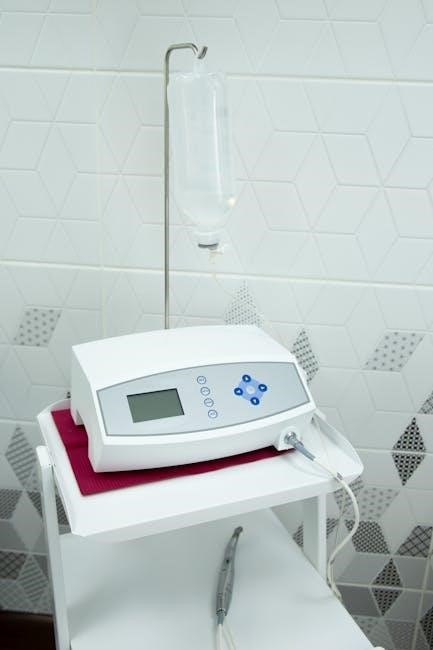Proper post-operative care is crucial for successful dental implant healing. Following specific guidelines ensures a smooth recovery, minimizes complications, and promotes optimal results for a lasting transformation.
Overview of Dental Implant Surgery and Recovery
Dental implant surgery is a minor procedure typically performed under local anesthesia. The implant is placed in the jawbone, and the area is allowed to heal. Initial recovery involves managing bleeding, swelling, and discomfort. Proper wound care and dietary restrictions are essential during the first few weeks. The healing process includes osseointegration, where the bone fuses with the implant, a process that can take several months. Following post-operative instructions carefully ensures a smooth recovery and optimal results for the longevity of the implant.
Importance of Following Post-Operative Care
Adhering to post-operative instructions is vital for preventing complications and ensuring proper healing. Neglecting care can lead to infection, implant failure, or prolonged recovery. By following guidelines, patients protect the surgical site, promote osseointegration, and minimize discomfort. Proper care also reduces the risk of bleeding, swelling, and damage to the implant. Compliance with recommendations maximizes the success and longevity of dental implants, ensuring a natural and functional smile. Consistency in post-care routines is key to achieving the best possible outcome for your dental implant procedure.
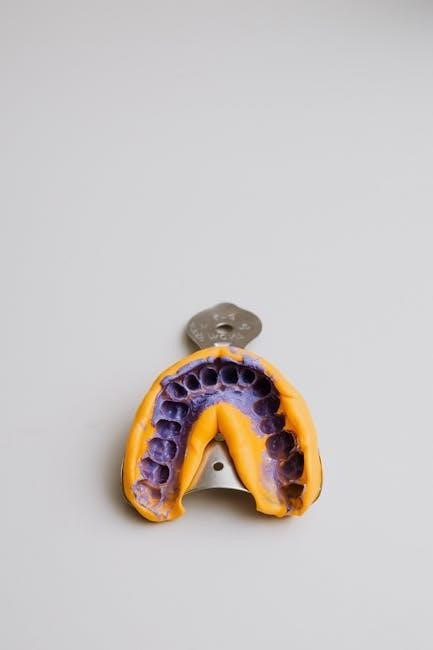
Immediate Post-Surgery Care
Avoid using straws, smoking, spitting, or sucking on anything the day of surgery. Apply ice packs to reduce swelling and rest to prevent complications and promote healing.
Bleeding Management and Control
Bleeding after dental implant surgery is normal and may last several hours. Bite down gently on the provided gauze for 30 minutes to control bleeding. If bleeding persists, replace the gauze with a clean one. Apply cool packs to the cheeks, jaws, and chin to reduce swelling. Avoid vigorous rinsing or spitting for 24 hours. If bleeding becomes heavy or uncontrollable, contact your dentist immediately. Keep your head elevated to minimize blood flow to the surgical site.
Gauze Usage and Pressure Application
The gauze pad placed over the surgical area should remain for 30 minutes to absorb bleeding. After removing it, if bleeding continues, apply a clean gauze with gentle pressure. Avoid chewing or disturbing the site. Use cool packs on the face to reduce swelling. If bleeding persists beyond a few hours, contact your dentist. Proper gauze usage and pressure application are key to preventing complications and ensuring the blood clot forms correctly, promoting healing and implant stability. Follow instructions carefully for best results.
Activity Restrictions for the First 24-48 Hours
Rest is essential during the first 48 hours after dental implant surgery. Avoid vigorous activities, bending, or lifting to prevent dislodging the blood clot. Smoking should be avoided completely to ensure proper healing. Refrain from using straws unless instructed otherwise. Activities that cause strain or direct pressure on the surgical area should be avoided. Prioritize relaxation and minimize movement to promote a smooth recovery and protect the implant site.
Diet and Nutrition After Dental Implant Surgery
A soft, mild, and nutritionally balanced diet is recommended. Start with liquids and gradually introduce soft foods, avoiding hard, crunchy, or chewy items for 8 weeks to support healing.
Recommended Soft Foods for the Healing Period
A soft diet is essential during the initial healing phase. Opt for foods like yogurt, scrambled eggs, mashed potatoes, and soft-cooked vegetables. Avoid hard, crunchy, or chewy items. After 4 weeks, soft chewing can resume, but hard foods should still be avoided for 8 weeks. Choose nutritionally balanced options to support recovery. Liquids and pureed foods are ideal for the first few days. Ensure meals are gentle on the surgical site to promote proper healing and minimize discomfort. Stick to these guidelines to avoid complications and ensure a smooth recovery process.
Foods to Avoid During Recovery
Avoid hard, crunchy, or chewy foods during the healing period to prevent dislodging the blood clot or damaging the surgical site. Stay away from nuts, raw vegetables, and hard candies for at least 8 weeks. Smoking and using straws should also be avoided, especially in the first 48 hours, as they can interfere with healing. Adhering to these guidelines ensures proper recovery and minimizes the risk of complications, promoting a smooth and effective healing process.
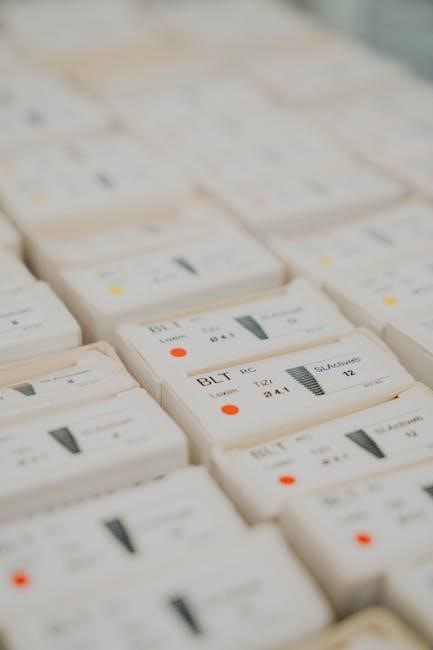
Pain Management and Discomfort Relief
Effective pain management after dental implant surgery involves prescribed medications like ibuprofen and acetaminophen. Follow dosage instructions carefully to alleviate discomfort and ensure proper healing. Consult your dentist if pain persists.
Prescribed Medications and Dosage Instructions
Prescribed medications, such as ibuprofen (600mg) and acetaminophen (500mg), are essential for managing post-surgery pain. Follow the dosage instructions provided by your dentist carefully. Start with ibuprofen and alternate with acetaminophen to alleviate discomfort. If pain is severe, stronger medications may be prescribed. Always take medications as directed to avoid overuse or side effects. Monitor pain levels and consult your dentist if discomfort persists beyond expected recovery timelines. Proper medication adherence ensures a smoother healing process and reduces the risk of complications.
Over-the-Counter Pain Relief Options
Over-the-counter pain relievers like ibuprofen (600mg) and acetaminophen (500mg) are effective for managing post-surgery discomfort. Ibuprofen is recommended for inflammation, while acetaminophen helps with pain relief. Alternate these medications as directed to avoid overuse. Start with ibuprofen and switch to acetaminophen after 4-6 hours. Follow the recommended dosages and schedules to ensure safety. Always consult your dentist before taking any medication, especially if you have medical conditions or take other prescriptions. Proper use of these options can significantly ease recovery and reduce discomfort effectively.
Oral Hygiene and Wound Care
Practice gentle oral hygiene to promote healing. Use Corsodyl mouthrinse twice daily, rinse for 30 seconds, and avoid disturbing the surgical site with fingers or tongue.
Mouth Rinse Usage and Technique
Start using Corsodyl mouthrinse the day after surgery, twice daily. Swish the solution gently around your mouth for at least 30 seconds, focusing on the surgical area. Avoid forceful spitting or rinsing, as this may dislodge the blood clot. After rinsing, spit out the solution and do not swallow it. This helps maintain cleanliness and promotes healing without disturbing the implant site. Proper technique ensures effective wound care and prevents complications during the recovery period.
Gentle Cleaning of the Surgical Site
Begin gentle cleaning 24 hours after surgery using a saline solution (1/2 teaspoon salt in 8 ounces of warm water). Dip a soft-bristle toothbrush in the solution and lightly brush the area, avoiding direct contact with the implant. Do not use harsh toothpaste or scrub aggressively, as this may dislodge the blood clot. Keep the area clean to promote healing and reduce the risk of infection. Avoid touching the surgical site with your fingers or tongue, as this can introduce bacteria and delay recovery. Proper care ensures a smooth and healthy healing process.
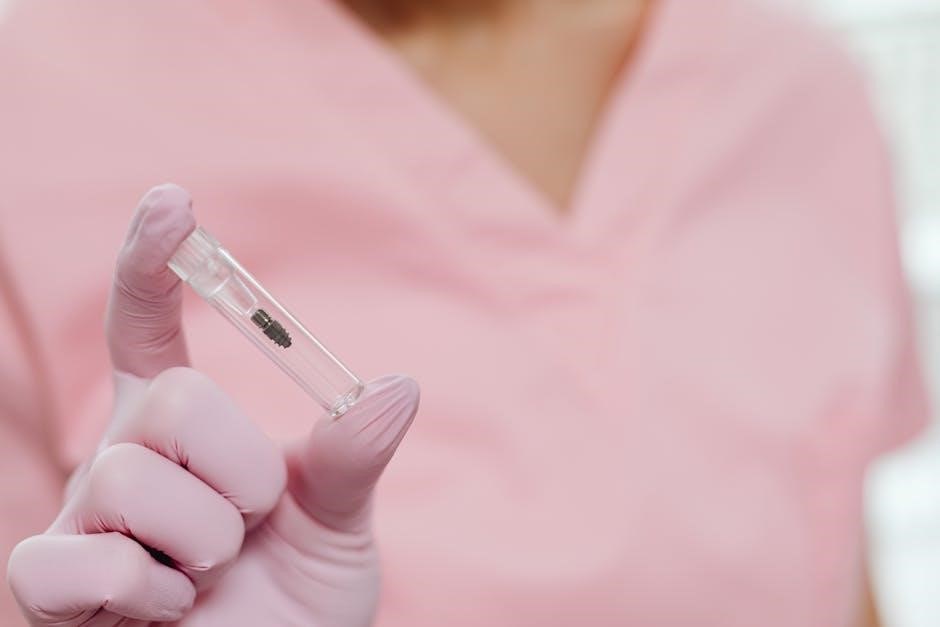
Physical Activity and Rest Guidelines
Rest is crucial immediately after surgery to aid healing. Avoid strenuous activities for 48-72 hours to prevent dislodging the blood clot. Light activities are permissible if bleeding subsides.
Recommended Activities During Recovery
During recovery, focus on rest and light activities to promote healing. Reading, watching TV, or taking short, gentle walks are ideal. Avoid heavy lifting, bending, or strenuous exercise for 48-72 hours. Light stretching or yoga can be done if comfortable, but avoid movements that strain the surgical area. Keep your head elevated while resting to reduce swelling. Engage in activities that minimize stress and promote relaxation to support your body’s recovery process effectively.
Activities to Avoid to Promote Healing
Avoid activities that may disrupt the healing process, such as smoking, using straws, or spitting forcefully, as these can dislodge the blood clot. Refrain from heavy lifting, bending, or strenuous exercise for at least 48-72 hours. Avoid chewing or applying pressure near the surgical site. Do not engage in contact sports or activities that risk injury to the mouth. Limit physical exertion to prevent swelling and promote a smooth recovery. Consult your dentist for specific guidance on resuming normal activities safely.
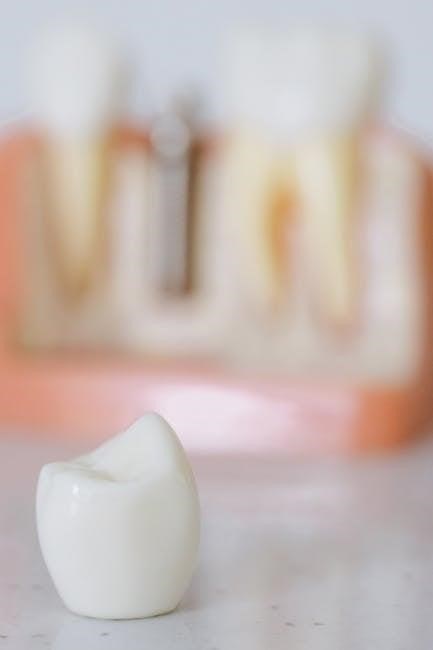
Follow-Up Care and Appointments
Regular follow-up visits are essential to monitor healing progress, remove sutures, and ensure proper implant integration. Attend all scheduled appointments to achieve optimal recovery and long-term success.
Importance of Scheduled Follow-Up Visits
Scheduled follow-up visits are crucial for monitoring the healing process and ensuring proper implant integration. These appointments allow your dentist to assess the surgical site, remove sutures, and address any concerns. Regular check-ups help prevent complications, such as infection or improper healing, ensuring the implant functions and looks as intended. Consistency in follow-up care is key to achieving a successful and long-lasting dental implant outcome, maintaining both oral health and overall satisfaction.
Monitoring the Healing Process
Monitoring the healing process after dental implant surgery is essential to ensure proper recovery. Your dentist will schedule follow-ups to check the implant site, assess healing progress, and confirm proper integration with the bone. Early detection of any issues, such as infection or improper healing, allows for timely intervention. Regular monitoring also helps verify that the implant is functioning as expected, ensuring a stable and durable result. Consistent oversight supports a smooth transition to the final restoration phase, guaranteeing long-term success and patient satisfaction.
